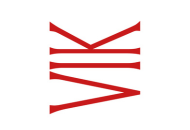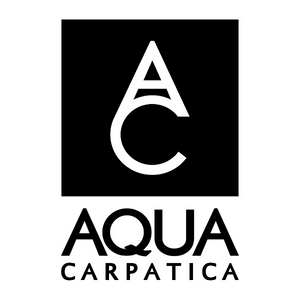The winemaker, Leon Gjerkeš, shakes the bottle and pours me a glass of the white, now cloudy, wine. The label also says the wine is ‘unfiltered – bottled with lees’. But these are the finest of fine lees, adding complexity and texture to what many consider is a neutral, largely light, often uninteresting white grape variety with high acidity as both its curse and redeeming feature.
Leon explains that he stirs the lees in the 600L barrel-shaped stainless-steel tank four days before racking. After frequent tasting, weekly bâtonnage and a couple of rackings during the six months ‘on lees’, the wine was put straight into bottles.
Leon, who runs an insurance business, admits it was a “very risky” experiment. “It was a little bit an answer to all natural winelovers,” he says. “I wanted to show with Laški rizling you can do different things.”

I’ve come to meet Leon in a small hamlet between two extinct volcanoes in the northeast of Slovenia because I’ve been searching for exciting examples of Laški rizling. Laški rizling is the name for Central and Eastern Europe’s workhorse grape variety, which is known as Graševina in Croatia, Welschriesling in Austria, Olaszrizling in Hungary and Riesling Italico in Italy.
I know it has the potential to produce great wines. Croatia’s Iločki Podrumi was recently awarded a gold medal in IWC2020 and took the Croatian White Trophy for its 2018 vintage, which the judges described as an “intense, generous, appealing and developed white wine. Very aromatic kerosene notes, Riesling in character. Mineral core with some aged development. White peach with an oily texture, very concentrated with fresh acidity. Fascinating, different style.”
The winemaking, according to the producer, involves “pressing and precipitation for 24 hours at a temperature of 10-15°C”, before fermentation and maturation in stainless-steel tanks in a cellar that dates from 1450.
I know Villa Tolnay produces my favourite Olaszrizling across the border in Hungary from grapes grown on Csobánc hill, on the northern shore of Lake Balaton. Tolnay’s Swiss owner and winemaker, Philipp Oser, takes a very different approach, fermenting in Stockinger barrels and ageing on fine lees for six months to produce a full-bodied wine with strong minerality, strong acids, and long ageing potential. The 2010 is still tasting fantastic.
I know that across the border, in southeast Austria, Ernst Steindorfer and his son, Roland, produce a fresher style with the more typical aromas and flavours of green apple and citrus in a region, Apetlon (Neusiedlersee), where the grape is best known for its world-class Trockenbeerenauslese wines.
The Steindorfers hand-harvest their grapes and then select the berries. The berries are macerated for four hours before pressing and fermentation in temperature-controlled stainless-steel tanks at about 18°C. The wine is then aged on lees for six months.
But I also know another Austrian producer, Weingut Taferner, in the heart of Carnuntum, which has dug up the Welshriesling vines it had in Ried Haidacker. They only had a few rows (0.2ha), but they were planted in one of the best sites for Carnuntum’s signature red wines: Zweigelt and Blaufränkisch. Karoline Taferner told me: “Welschriesling has no importance in our winegrowing region as it is mostly grown in south and southeast Styria and in the region of Weinviertel in Niederösterreich where it is used for the production of sparkling wine.
“It also is a lack of interest from the consumer. The variety is not as trendy as Grüner Veltliner or aromatic varieties like Muskateller or Sauvignon Blanc.
“Welschriesling is known for its high acidity and light and neutral wines that should be consumed young. Its wines are not as long-lived as Riesling or Grüner Veltliner.
“Welschriesling is one of the white varieties that takes well to warmer climate – in cooler climates it can be overly acidic.
“So, yes, it was a combination of different factors. Economic on one hand and we want to select our varietals now with very close attention to each specific vineyard – their soil makeup and location. We tried to ensure that the grapes we grow represent the fullest expression of the vineyard.
“We think for Ried Haidacker Blaufränkisch will have way more potential than Welschriesling.”
It was very disheartening as Laški rizling is the dominant variety in a field blend that I produce in Slovenia, near the beautiful village of Jeruzalem.
So, when I came for my harvest, I announced on Twitter that I wanted to make a Graševina and promptly got ticked off by a Slovenian wine consultant who rightly pointed out that, as I was in Slovenia, I could only make a Laški or Welshriesling. I reminded him that Laški is considered a table wine and few producers put much effort into producing a premium version because they can’t price it as such. People still remember Ljutomer Laški, shipped in bulk to Britain in the 1960s and 70s, and only use it as their first choice for spritzers. I challenged him to name a Slovenian wine producer with a premium Laški – apart from PRA-VINO Čurin-Prapotnik, which makes luscious sweet wines from the variety.

He came back with two names – Marof and Gjerkeš. I’ve been to the stunning Marof winery a few times – it’s shaped like an upturned ship, representing the time when that part of northeast Slovenia was part of the Pannonian Sea – and I truly rate its winemaker, Uroš Valcl, but whenever I go there I get swept away by the reds, made from Modra Frankinja (Blaufränkisch) and Zweigelt, the Chardonnays, which undergo long skin maceration (anything from five days to a year), and the creamy Sauvignon Blancs, which are macerated for five days before native ferments in 500L barrels. I know Laški rizling is part of the Marof Breg Cuvee – a blend of the 40ha estate’s main white varieties, Laški rizling, Chardonnay and Sauvignon Blanc, macerated on skins for five days, then fermented with native yeasts in 3,000L barrels and further aged on lees for 15 months. But I couldn’t recall Marof’s Laški varietal, so I paid Gjerkeš a visit.

Both estates are in the northeast of Slovenia but whereas Marof is close to the Hungarian border, Vina Gjerkeš is close to the Austrian border. Leon says it’s 800m away. The Gjerkeš family is developing a lovely wine tourist offer in Prekmurje, which he claims is one of the sunniest regions in Slovenia and therefore the acidity is lower (5.8-6.3g/L TA). He grows five white varieties in his 2ha of vineyards, has a lovely tasting room and is developing a seven-room guest house, which he hopes to open next summer.
He took me through his range of Laškis, saving his newest wine, the cloudy 2019, until the end.
He specialises in white wines, with Laški and Riesling the last of his varieties picked (after Yellow Muscat, Chardonnay, and Pinot Gris).
“Laški rizling is not problematic, it’s in good condition until the end,” he says.
Leon likes to use overripe grapes and “minimum touch” in the winery to show vintage variations. “I don’t like to make the same Laški rizling every year,” he says.
Tasting through the vintages, they are very distinct. Leon explains it’s because the grapes don’t achieve the same level of ripeness.

The winemaking is fairly similar most years: stainless-steel tanks, 12 hours’ cold maceration, inoculation with commercial yeasts, left on yeast lees for one or two months before the first racking.
Well, this was the protocol until last year, when he decided to something very different – he bottled the wine on its fine lees.
He still had enough stock of the fresh-style 2017 and 2018, so he could afford to experiment, he figured.
“It was risky but it’s very nice; it was so interesting from the start,” he says. “I think this is for restaurants that have the balls to serve this sort of wine.”
He says the reaction to the wine has been “very positive” but when I ask if he will repeat the experiment with the 2020 vintage, he replies: “We don't know yet. Out of situations with the Covid virus and the practical standstill in wine sales, a decision will be adopted in the spring. For now, the wine is still on its lees.”
The flor version

Lichtenberger González, a 'natural' wine operation run by Austrian Martin Lichtenberger and Spaniard Adriana González (above), is maturing its Welschriesling under flor yeast.
Now based in Martin’s family cellar in Breitenbrunn (a village halfway between the Leithaberg hills and Neusiedlersee), Adriana tells me: “The trial came after we thought that this beautiful variety could be perfect for a flor wine, because of its high acidity and marked character. Developing the idea, we thought that we do not want that it is totally dominated by biological oxidation. So, we play with the two extremes – working with the biological oxidation but also taking advantage of the lees reduction.

“After a short maceration with the stems, the must goes into a single 225L barrel. We do have the big luck to have an old cellar built on sandstone where a good flor is allowed to grow for two years.”
Vintage 2017 was the first release and vintage 2018 has just hit the market.
Adriana, who met Martin while they were studying winemaking in California, says: “Both vintages are extremely terroir-dominated wines with an incredible saltiness.”
Roll on 2021, I feel like jumping onboard this new wave of experimental winemakers who are lifting the reputation of Aminea Gemela, Biela Sladka, Bielasladka Grasica, Glasica, Grasavina Talijanska, Grasevina, Graševina, Grasica, Groshevina, Italianski Rizling, Laški rizling, Nemes Olasz Rizling, Olaszrizling, Olasz Rizling, Petit Riesling, Petracine, Rakusky Rizling, Riesler, Riesli, Riesling Italian, Riesling Italico, Risling Italyanskii, Risling Vlashskii, Rismi, Rizling Italico, Rizling vlašský, Talianska Graseviana, Talijanski Rizling, Vlasak, Italian Riesling, Ryzlink vlašský, Ryzlink, or whatever its name is.

 English
English French
French



.png)


.png)





